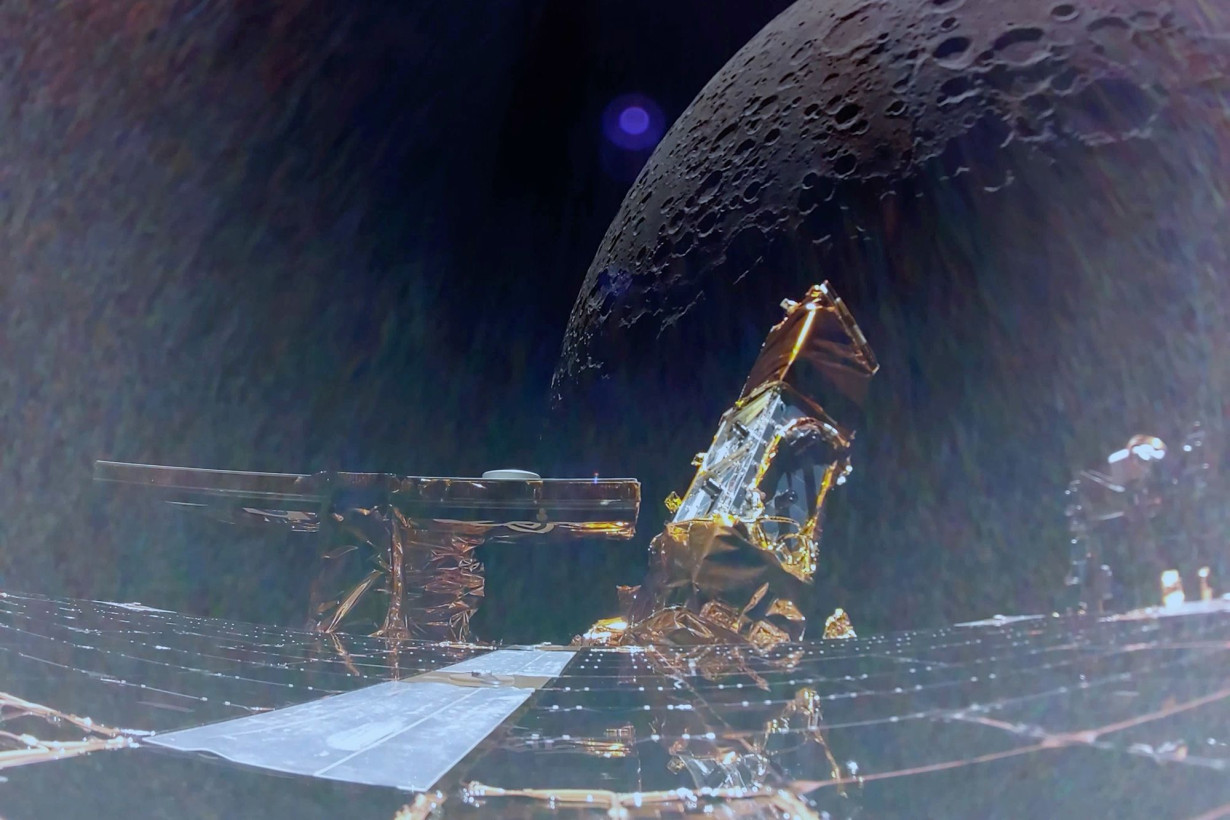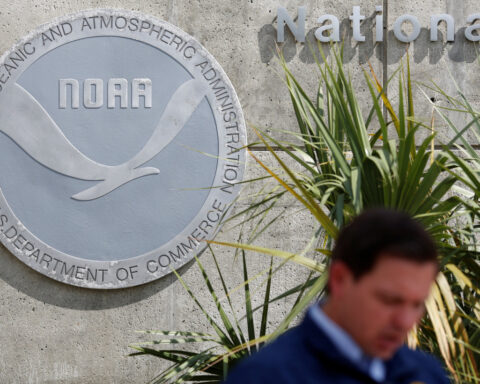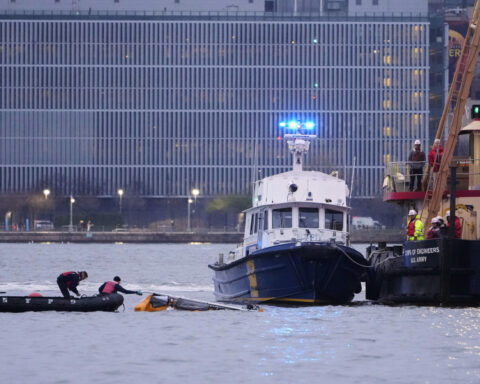(CNN) — The Blue Ghost lunar lander has been sharing dazzling visuals of our celestial neighbor since it successfully entered the moon’s orbit on February 13.
The new footage features a close-up of the moon’s far side, an area that is not visible from Earth, taken after the lander transitioned from a high elliptical orbit to a lower elliptical orbit — about 120 kilometers (74.6 miles) above the surface — the Texas-based company Firefly Aerospace announced on February 18.
Along with the flyby footage that shows off the moon’s rocky surface dotted with impact craters, the spacecraft also captured stunning imagery of an area of the lunar south pole, as well as footage of the Earth seen rising and setting behind the moon from the lander’s perspective in orbit.
“The latest Moon footage captured by Firefly’s Blue Ghost lunar lander is completely surreal,” said Joseph Marlin, deputy chief engineer for Blue Ghost, in an email.
“Of course, we had an idea of how the imagery would look, but seeing the real-life footage of the Moon’s craters and boulders from our very own spacecraft is such an inspiration, and really hits home how close we are to our final destination after all the hard work we’ve put into this mission.”
The private US spacecraft left Earth’s orbit on February 8 before making a dayslong journey to reach the moon. (Earth’s distance from the moon averages about 238,855 miles (384,400 kilometers) away, according to NASA). Now, Blue Ghost is more than halfway through its 16-day orbit of the moon and will attempt a descent to the lunar surface on March 2.
The lander carries 10 NASA science and technology instruments aboard as part of the space agency’s Commercial Lunar Payload Services, or CLPS, initiative. CLPS is part of NASA’s broader Artemis program, which aims to land astronauts on the moon for the first time in more than 50 years. After Blue Ghost lands on the moon, the instruments will operate for more than two weeks to collect data primarily on the moon’s subsurface, such as lunar dust and regolith, the loose rocks and mineral fragments that cover the lunar surface.
“Robotic deliveries like the Blue Ghost mission perform science experiments, test technologies, and demonstrate capabilities on and around the Moon to prepare for astronaut missions to the lunar surface, and ultimately crewed missions to Mars,” NASA’s Artemis program said in a recent Instagram post.
Blue Ghost is expected to land on the far eastern edge of the moon’s near side by Mons Latreille, an ancient volcanic feature in a 300-plus-mile-wide (483-kilometer) basin called Mare Crisium, or “Sea of Crises.” The lander will then perform surface operations for one lunar day (about 14 Earth days) before it faces lunar nighttime, during which the darkness and cold temperatures are expected to cause the spacecraft to cease operations.
The engineers behind Blue Ghost are particularly excited for the data collected after landing, and the imagery they hope to acquire then, Marlin said.
“In addition to the wealth of science we plan to transmit to Earth from (CLPS) experiments, we expect to capture a solar eclipse on March 14 where the Earth will block the sun from the Moon’s surface and cast Blue Ghost into a shadow for about five hours,” Marlin said, explaining that the March 14 event will be a solar eclipse from the moon’s perspective while a lunar eclipse will be visible from parts of Earth.
“Then we’ll capture the lunar sunset on March 16 and hopefully verify the dust levitation phenomenon (when lunar dust appears to ‘levitate’ above the surface) that was first sketched by the last Apollo astronaut on the Moon.”
The-CNN-Wire
™ & © 2025 Cable News Network, Inc., a Warner Bros. Discovery Company. All rights reserved.

 Trump has begun another trade war. Here's a timeline of how we got here
Trump has begun another trade war. Here's a timeline of how we got here
 Canada's leader laments lost friendship with US in town that sheltered stranded Americans after 9/11
Canada's leader laments lost friendship with US in town that sheltered stranded Americans after 9/11
 Chinese EV giant BYD's fourth-quarter profit leaps 73%
Chinese EV giant BYD's fourth-quarter profit leaps 73%
 You're an American in another land? Prepare to talk about the why and how of Trump 2.0
You're an American in another land? Prepare to talk about the why and how of Trump 2.0
 Chalk talk: Star power, top teams and No. 5 seeds headline the women's March Madness Sweet 16
Chalk talk: Star power, top teams and No. 5 seeds headline the women's March Madness Sweet 16
 Purdue returns to Sweet 16 with 76-62 win over McNeese in March Madness
Purdue returns to Sweet 16 with 76-62 win over McNeese in March Madness








